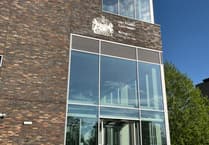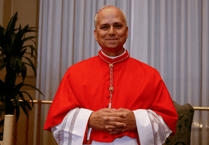Well, you could have knocked me down with a feather! You live and learn don't you in this life? There I was, enjoying Country File when out of the blue the presenter informs the viewing public that Michelangelo obtained the ochres for his paints from Clearwell Caves.
Now which Michelangelo was this? Was it that major figure of the Renaissance Michelangelo Buonarroti, born at Caprese, Italy, in 1475, who among other masterpieces sculpted David and painted the Sistine Chapel in the Vatican? Because if so, I spent over 30 years teaching my art classes totally erroneous information on the life of the great man.
My lecturers at Art College must have been feeding me a load of nonsense about Michelangelo, so what am I to believe?
Well, luckily I have great faith in reality and the facts are that Michelangelo never travelled to England in his lifetime; he never travelled beyond his native land and then almost entirely between Florence and Rome; also he would never have used pigments for his paints that originated in the Forest of Dean or even the British Isles.
For the record, colour pigments from earths and minerals that Renaissance artists used came mainly from Italy itself. Examples were Venetian Red which was derived from an almost pure iron oxide that was dug from the Veneto around Venice. Also, quarrying around Lake Como was the source of a red ochre pigment that Michelangelo was reputed to use for his colours when he painted the Sistine Chapel. Green Earth pigment came from the Verona area, producing colours such as Terra Verte. Brown pigments were derived from clay earths containing iron oxide, dug around Sienna and Umbria. Yellows were derived from lead oxide and synthetic lead antimoniate such as Naples Yellow. Also Lead White was produced from lead.
Other colours were derived from basic copper carbonate, such as Malachite, Azurite and Egyptian Blue; while the exotic lapis lapuli from Afghanistan produced the historical pigment, Ultramarine blue.
I do wish that TV programme researchers would check the accuracy of the facts that they feed their presenters with; we've enough fantasy being insinuated into our factual Forest of Dean history nowadays, as it is.
John Belcher, Joyford.



